Intel Xeon W-3175X Review: Ultimate Performance at the Ultimate Price
Why you can trust Tom's Hardware
Conclusion
Intel’s Xeon W-3175X is Intel’s answer to Threadripper’s increasing popularity in professional circles, and it offers an impressive blend of performance without many of the compromises associated with the Threadripper lineup. AMD’s Threadripper processors exposed a weakness in Intel’s workstation-focused Xeon W lineup. Aside from Threadripper’s higher core counts, they also came at significantly lower prices and offered plenty of extras, like 60 PCIe lanes and unlocked multipliers. Meanwhile, Xeon W processors were at a disadvantage with locked multipliers and 44 PCIe lanes.
Unfortunately, Intel hasn’t sampled its other Xeon W processors for evaluation, but they largely mirror the core counts and performance of the Skylake-X models in our lineup, with the primary difference being reduced memory timings to accommodate ECC memory and locked multipliers. As such, we’re using the Skylake-X models as stand-ins for Intel’s other Xeon W models.
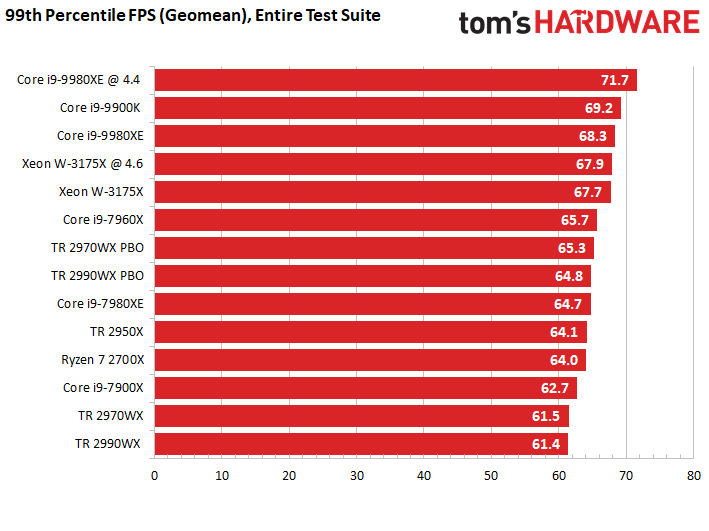
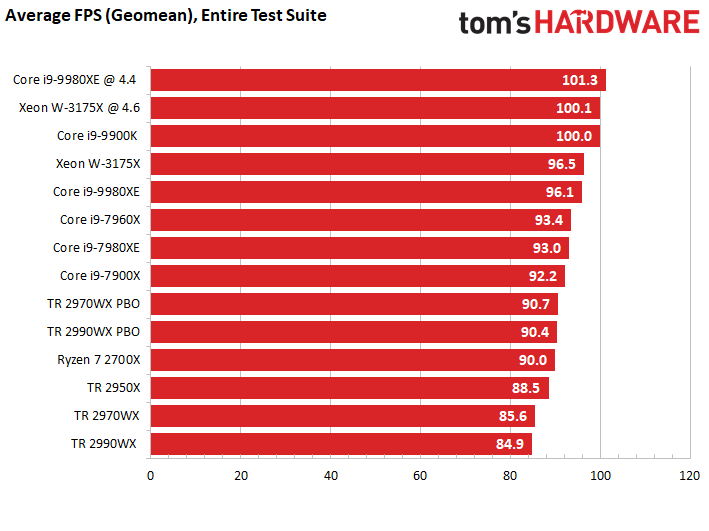
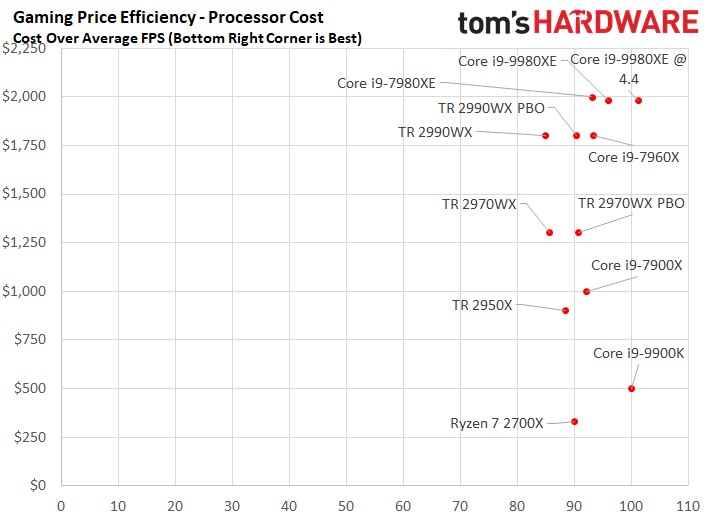
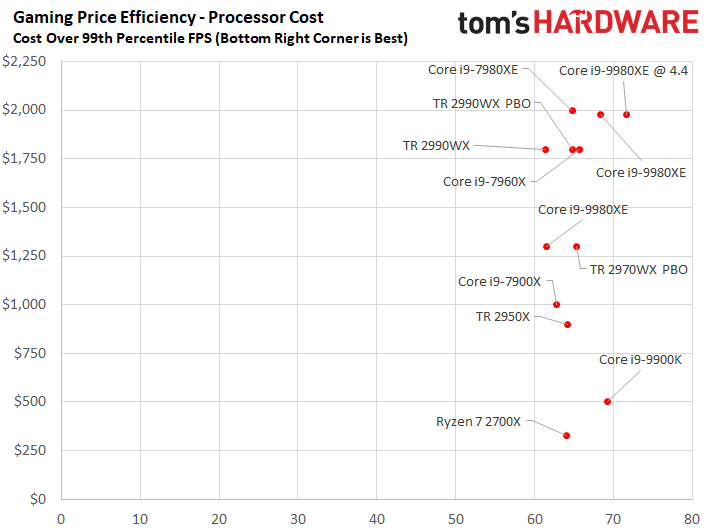
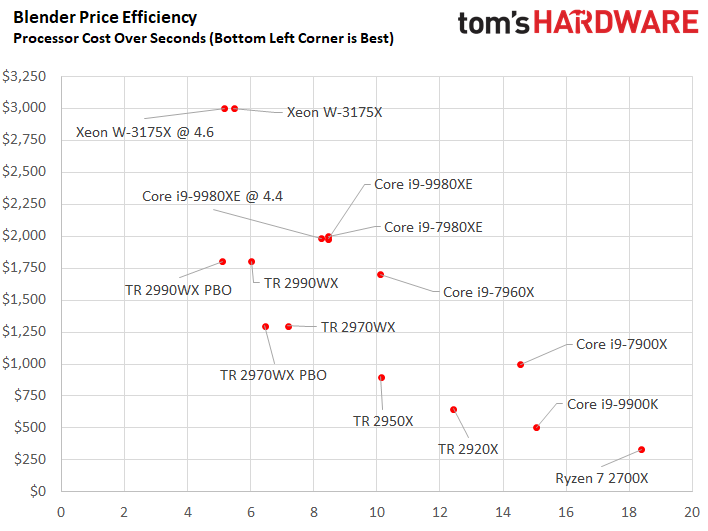
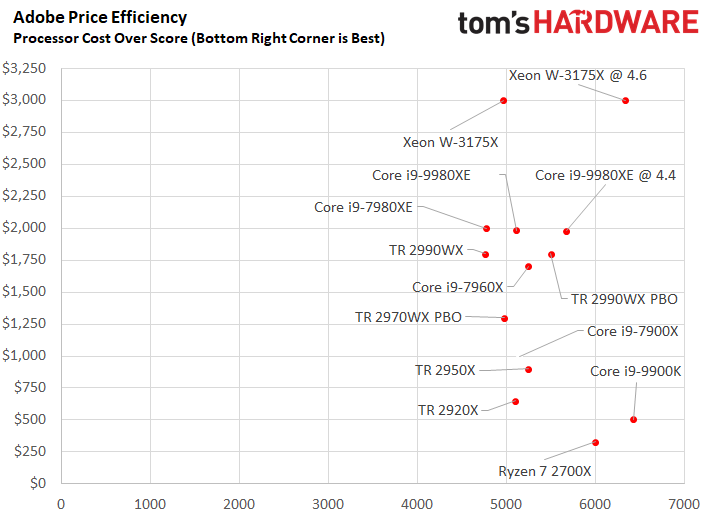
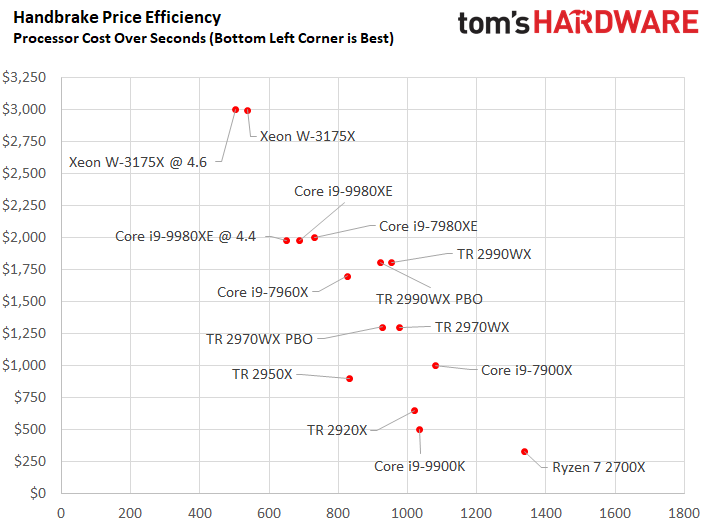
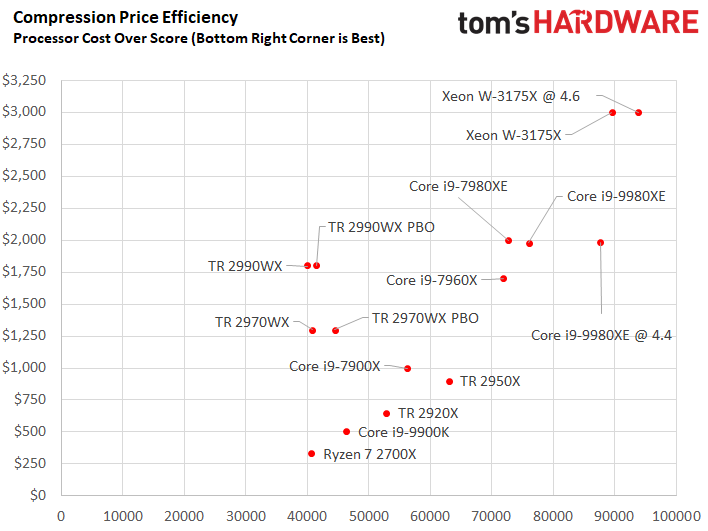
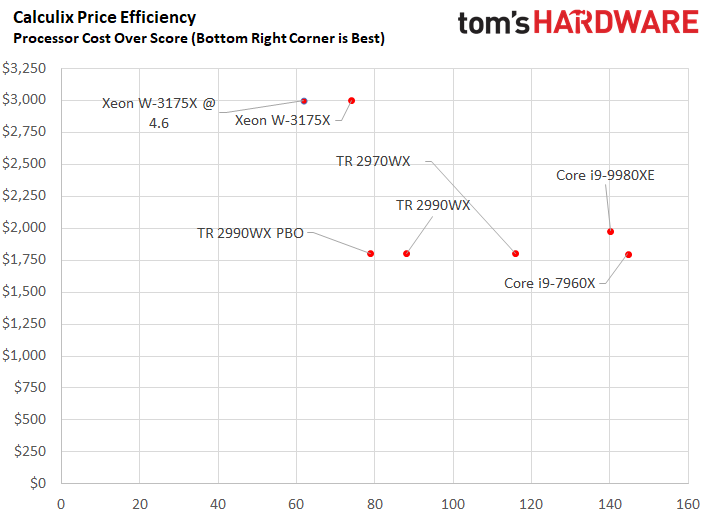
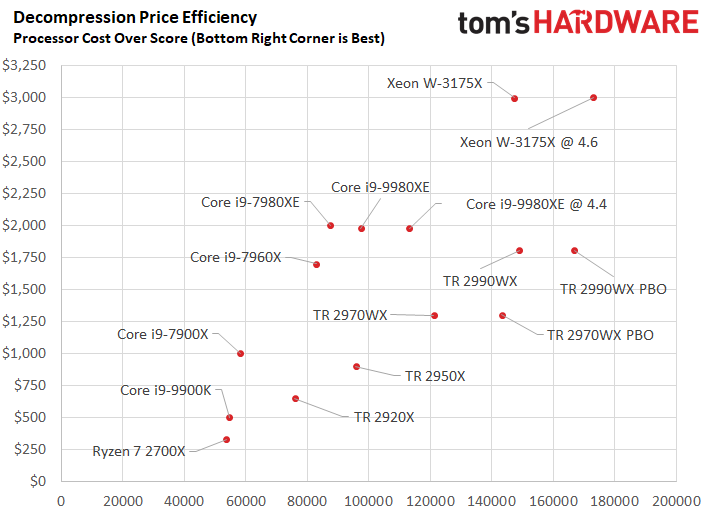
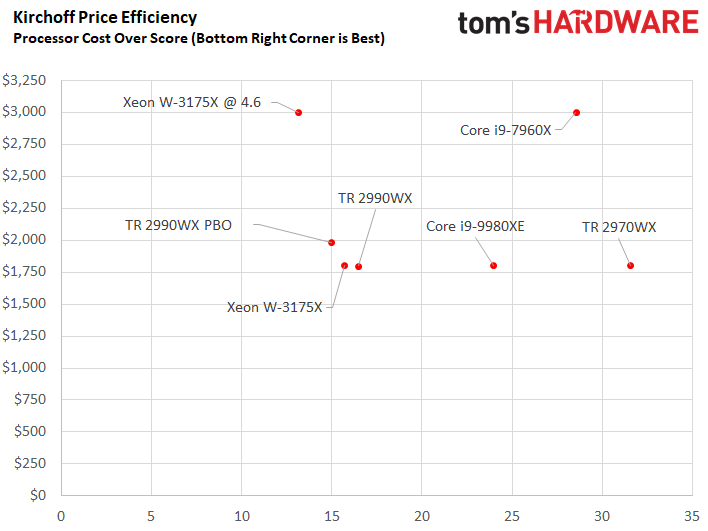

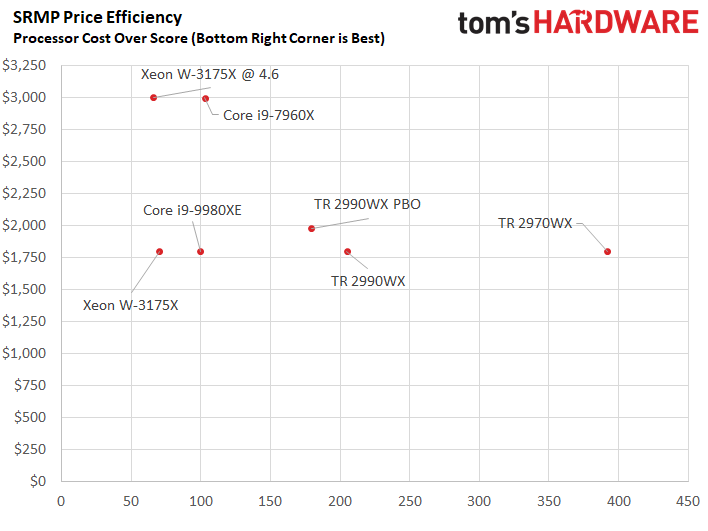
We’re accustomed to lower frequencies on high core-count chips, but Intel has mastered pushing the limits of its mature 14nm process. That shows in the W-3175X’s surprisingly high multi-core turbo ratios. That extra power kicks in during demanding threaded workloads, like our rendering, encoding and workstation tests, to deliver an impressive amount of performance. Overall, the W-3175X matched or beat Threadripper 2990WX in most of our threaded tests. Intel’s superior performance in AVX-enabled workloads also led to larger deltas in applications that leverage the densely-packed instructions.
The W-3175X also comes with a 4.3 GHz dual-core boost that provides snappy performance in lightly-threaded apps, like web browsers and mundane office applications. The second-gen Threadripper processors have made great strides in this area, but they still can’t match Intel’s frequency and IPC throughput advantage.
We included gaming testing in our evaluation for the enthusiast crowd, but also to underline that ultra high-end processors aren’t a good value if gaming is your primary goal. In almost all cases, you’re better served with a mainstream or HEDT chip.
AMD’s Threadripper WX-series processors offer solid performance in some workloads, but the unique architecture also suffers from reduced performance in others. AMD developed a series of different settings that you can apply, and they do help with some applications, but constant reboots to flip between modes isn’t a tenable solution for professionals with established workflows. AMD also designed a background process that monitors workloads and adjusts accordingly, but the results vary based on the application, too.
The W-3175X’s unlocked multiplier opens up another level of performance for those on the hunt for the bleeding edge, but as a result, it sucks more power than any processor we’ve tested. The processor consumed nearly 800 watts during our stress tests and often peaked at 700 watts during demanding threaded tasks. You’ll need a beefy power supply, or two, to really push the clocks. Our sample overclocked to 4.6 GHz with relative ease, albeit with the AVX frequencies left at stock settings. We dialed up the AVX frequencies in steps, but the extra thermal generation easily overwhelmed the high-end EKWB cooler.
Get Tom's Hardware's best news and in-depth reviews, straight to your inbox.
As always, power consumption coincides with waste heat production, so prepare to foot the bill for an expensive watercooling solution, at a minimum, if overclocking is on the menu. Thermal output constrained our overclocking efforts, but you could expose more overclocking headroom with a custom loop or more extreme measures, like a water chiller or liquid nitrogen. That said, professional users and ‘creators’ aren’t the type of users that we would typically associate with overclocking, but AMD’s automated overclocking feature broadens the appeal by enabling an easily-accessible performance boost that even novices can exploit with the click of a button. It even dynamically adjusts based on the capabilities of your components. Intel offers its eXtreme Tuning Utility (XTU) for software-based overclocking, but it still requires manual tuning.
Intel’s ultra-premium platform is coming to market from system integrators first, with retail models slated to follow at an unspecified date. These systems will carry hefty price tags due to the components required, such as bulky watercooling loops and premium power supplies paired with expensive motherboards.
Professionals aren’t as sensitive to cost as they are to time: For professionals, minutes equate to dollars. The Xeon W-3175X will certainly find a market, albeit a niche one, in the professional segment. And perhaps with a few lucky well-heeled enthusiasts, too.
MORE: Best CPUs
MORE: Intel & AMD Processor Hierarchy
MORE: All CPUs Content

Paul Alcorn is the Editor-in-Chief for Tom's Hardware US. He also writes news and reviews on CPUs, storage, and enterprise hardware.
-
rantoc Shame i don't live on the north-pole where this cpu could be fully utilized - As a space heater and cpu ;)Reply -
shrapnel_indie Reply21725395 said:Shame i don't live on the north-pole where this cpu could be fully utilized - As a space heater and cpu ;)
With this current polar vortex.... you might not need to live at one of the poles to take advantage of the space heater qualities.
-
jimmysmitty As impressive as it is that Intel can match or beat more cores with less Intel really needs to get pricing in check. Its hard to justify this CPU when its cost is nearly double but the performance is not always double.Reply
I like Intels platform but man they really have to come back down to earth and start competing with AMD from a price perspective as well. -
rschiwal I've always been an AMD fan. For my gaming and Blender use it's Ryzen all the way! you can't beat the performance/cost ratio, but as a system administrator, I would recommend a Dell server with this processor as a core server in business infrastructure. Xeon is a known commodity. I would love to see Threadripper servers in non-critical operations until I know how dependable they are, but they are the new hotness. In business, you are looking for a dependable tractor, not a flashy sports car.Reply -
salgado18 Reply21725395 said:Shame i don't live on the north-pole where this cpu could be fully utilized - As a space heater and cpu ;)
*fortunatelly. One Blender run would melt the entire polar cap. -
bloodroses Reply21725522 said:21725395 said:Shame i don't live on the north-pole where this cpu could be fully utilized - As a space heater and cpu ;)
With this current polar vortex.... you might not need to live at one of the poles to take advantage of the space heater qualities.
I know what you mean. I live in Michigan and was greeted to -6 F outside this morning. :( I'm just glad this is only supposed to stay for a day or 2. -
logainofhades More ridiculous pricing from team blue. You could build a couple of threadripper systems, for the cost of this single Intel system.Reply -
jimmysmitty Reply21725843 said:More ridiculous pricing from team blue. You could build a couple of threadripper systems, for the cost of this single Intel system.
The issue is the market this is geared towards. That market doesn't see the same way we do. As another user said they will stick with what has worked until TR can be proven to work as well and support the same.
I agree the pricing is a bit insane though and Intel needs to get on the same level but I doubt they will until AMD truly threatens them. I mean look at the results. Its a 28 core chip thats performing on the same level and sometimes beating a 32 core chip. -
dorsai The vast majority of corporate IT departments will not care at all about the unlocked multiplier...most have strict policies about overclocking being a no go...so there's no reason to boost the rating of this chip because of it. Outside of a few key exceptions most of the test results would never justify the price associated with migration to the w-3173x platform...indeed I would guess that few of these processors will ever be bought outside of corporate IT shops with the deep pockets to purchase them. This chip is destined to be nothing but a niche product exemplifying both what Intel can do when pushed to it...and a lesson in cost vs performance economicsReply -
Brian_R170 If the system has the potential to earn you tens of thousands of dollars more than a competing system, then spending an extra $3K is a no-brainer. Of course, you have evaluate your choices 100% objectively, which isn't always easy to do without actually purchasing and using them, so Dorsai is likely correct that the vast majority will end up medium/large corporations. However, the few that do end up with reviewers and enthusiasts will undoubtedly garner the most attention.Reply